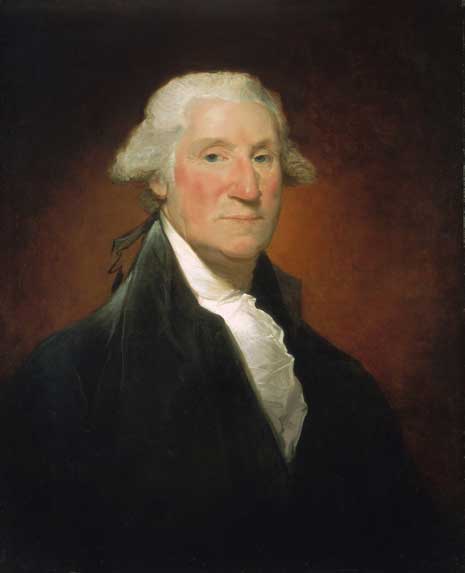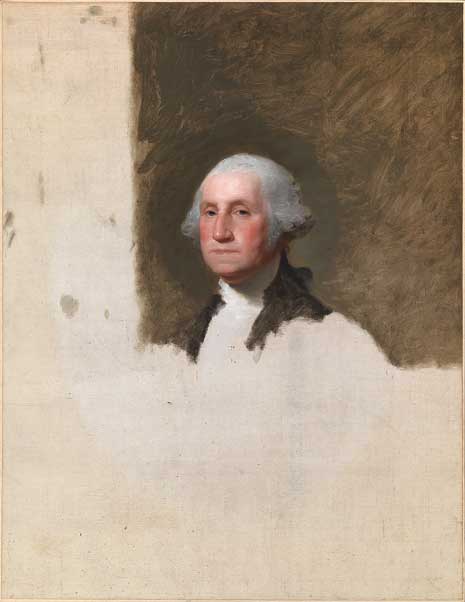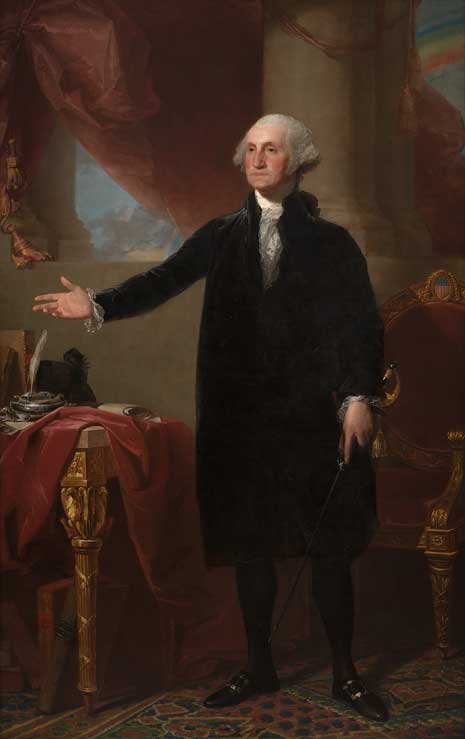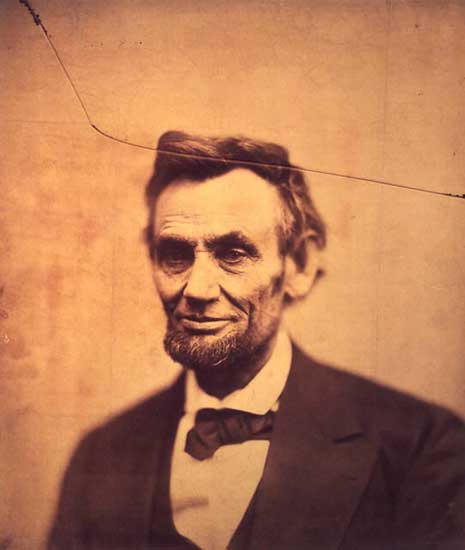Gilbert Stuart’s Washington: Rare Views of Our First President

George Washington (Vaughan portrait)
Gilbert Stuart
Colonial portrait painter Gilbert Stuart—armed with talent, a letter of introduction, and the gift of gab—went to Philadelphia in 1794 to ask President George Washington to pose for him. Washington first sat for the artist in 1795, and the resulting portrait—as well as two subsequent portraits from life—became the basis for more than 100 replicas by Stuart of our nation’s first commander in chief. This Presidents’ Day the National Portrait Gallery is pleased to exhibit Stuart’s original “trifecta”—the Athenaeum, Vaughan-type, and Lansdowne portraits. Named for their original owners, these rare canvases have endured as our most iconic views of the man who led the newly formed United States.
The Vaughan portrait shows Washington facing to his left. While working on this image, Stuart chattered energetically to entertain the president, but the chief executive was not captivated by the artist’s witty anecdotes and found the long sessions insufferable. Fortunately, the portrait shows none of Washington’s annoyance or discomfort. We see a dignified leader, bathed in a warm glow. Although this is only a head-and-shoulder view, the artist managed to convey Washington’s impressive six-foot-two-inch frame and dignified bearing.
George Washington (Athenaeum portrait)
Gilbert Stuart

After the success of the first portrait, Martha Washington commissioned portraits of herself and the president for Mount Vernon. They are now known as the Athenaeum portraits because the Boston Athenaeum owned them for 150 years. Washington faces to his right in this portrait, which, though unfinished, appears spontaneous and dramatic. It became Stuart’s most reproduced image. If it looks familiar, perhaps you have seen it on the dollar bill. The president didn’t fare much better at this sitting with Stuart. The artist noted, “When I painted him, he had just had a set of false teeth inserted, which accounts for the constrained expression so noticeable about the mouth and lower part of the face.”
George Washington (Lansdowne portrait)
Gilbert Stuart

The full-length Lansdowne portrait of 1796 presents Washington gesturing grandly toward an unseen assembly, as well as the viewer. He stands amid allegorical symbols. A rainbow, symbolizing peace and prosperity after the American Revolution, appears in the background. His chair bears the seal of the new United States, and the books on the table—Federalist and Journal of Congress—document the new nation. The books below the table, which has legs adorned with American eagles, refer to Washington’s military and revolutionary past. See it now—it comes off view in February 2016 for conservation and won’t return until 2018.
Abraham Lincoln (“cracked-plate” photograph)
Alexander Gardner

If Washington is not your favorite president, don’t despair. The famous “cracked- plate” photograph of Abraham Lincoln will be on view for only five days—from February 12 to16, 2015. Created on February 5, 1865, it was the last formal portrait of Lincoln to be taken before his assassination in April 1865. When the mammoth glass negative cracked, photographer Alexander Gardner made only one print from the damaged negative before discarding it. Be sure to catch a rare glimpse of this haunting image and check the Portrait Gallery calendar for details about these other Presidents’ Day events:
3-D Portrait of President Obama: Friday, February 13, through Monday, February 15
In 2014 President Barack Obama became the first president to be scanned using 3-D technology when a Smithsonian-led team of 3-D digital imaging specialists visited the White House. The resulting 3-D-printed bust and life mask are part of the National Portrait Gallery’s collection.
—Amy Pastan, for the National Portrait Gallery
